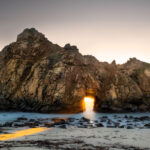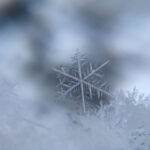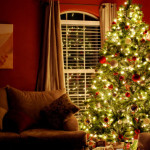Do you ever wonder how those amazing pictures of homes and their interiors are done? How did they make those small rooms look so spacious? And how can they make the home look so presentable, even with someone still living in it? It’s simply all about using the right angles to make the rooms and spaces as appealing as possible to potential buyers.
The exterior of the home should always be considered on the shoot. Determine the light and the weather that gives the exterior its best look. Houses and interiors may look the same, but getting into the right perspective and creating good composition may often make one home stand out from the others when photographed.
Endeavor to create a scene which suggests the feeling of a warm, welcoming haven. Always survey the rooms before taking your picture so you can get a true feel of the home and also work out the best composition and lighting angles.
Preparing for a shoot starts with your gear. Cameras with good ISO performance greatly help in this task. You will need to understand the basics of photography, aperture, shutter speed and ISO to get the proper exposure, because lighting can often be quite tricky.
Real estate photography is really all about the lenses you use. A wide angle lens anywhere between 14 to 24mm is the best option, as it gives a certain perspective; it stretches out rooms and angles making them appear bigger than they really are. A wide or ultra wide lens is the key to success.
A tripod is also an integral piece of equipment. Some rooms will be dark, calling for a low ISO and a lower shutter speed, which will introduce camera shake if not mounted on a tripod. You should also able to record finer images, meaning greater sharpness and an increase in depth of field. Always keep the camera level, if you do not, vertical lines may be distorted or lines may appear crooked. Always use the camera’s built-in horizon to keep the camera level. Alternatively, you can purchase small spirit levels which fit onto the camera’s hot shoe.
Real estate photography will challenge your perspective and composition skills. Ideally, you should pay special attention to the most important rooms in the house: the main living room, bathrooms, bedrooms, and kitchen. Always try to shoot into corners–never straight onto a walls–this will create a sense of depth in your images. It’s best to create a shot list, as this will guide you on how you want to best present the house.
Once your equipment is set up, I recommend shooting in brackets. On a single shot, take 3 images at different exposures. You may need to create a composite image, as interior and exterior exposure can be completely different. The combination of these photos in post processing can provide greater details in the scene. Shooting in HDR will produce greater dynamic range, especially in exterior shots, though care must be taken when editing these images, as HDR can sometimes look artificial or surreal.
About the Author:
Phil Cooper (tungstenfilm.com) is a real estate photographer based in Brisbane Australia. He has been photographing homes for the past 2 years.
For further training on real estate photography:
Like This Article?
Don't Miss The Next One!
Join over 100,000 photographers of all experience levels who receive our free photography tips and articles to stay current:








So many problems with this article.
1.) The first image looks like CGI. The worst part is the composite adding the people in the shot. The girl in the pool is not to scale compared to the people beside the pool. Awful. Even the sky looks composited.
2.) The author calls for a camera with good ISO performance but 2 paragraphs later says you need a tripod because you’ll be working with low ISO.
3) You say a lens 14-24 is best, but you fail to mention the distortion caused by wide angle lenses and how much will be cropped out when correcting for it. You also fail to mention that cropped sensor cameras will need even wider (10 or 11mm) to equal about 16mm.
4.) The second image is a great example of very bad HDR.
5.) Never shoot straight into walls?! Are you kidding me?! Have you never heard of one-point composition?
6.) The author is NOT a real estate photographer. The slideshow on his websites features NO interior shots. The link for “real estate” leads to a “page not found”.
C’mon, Picture Correct, you can at least vet your writers a little better. At the very least, visit their website to see if they actually specialize in the area they are writing about.
The photo by Motti Zehavi was obviously taken with a TS lens. Terrible. Makes the property look like a toy train set. If you are going to pick an example of outdoor architectural photography, at least pick a good one.